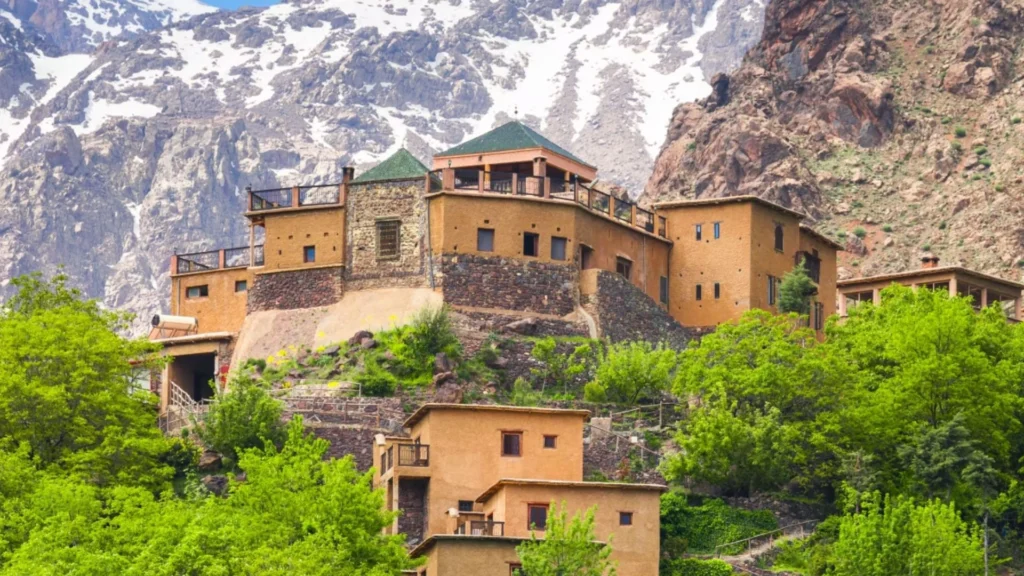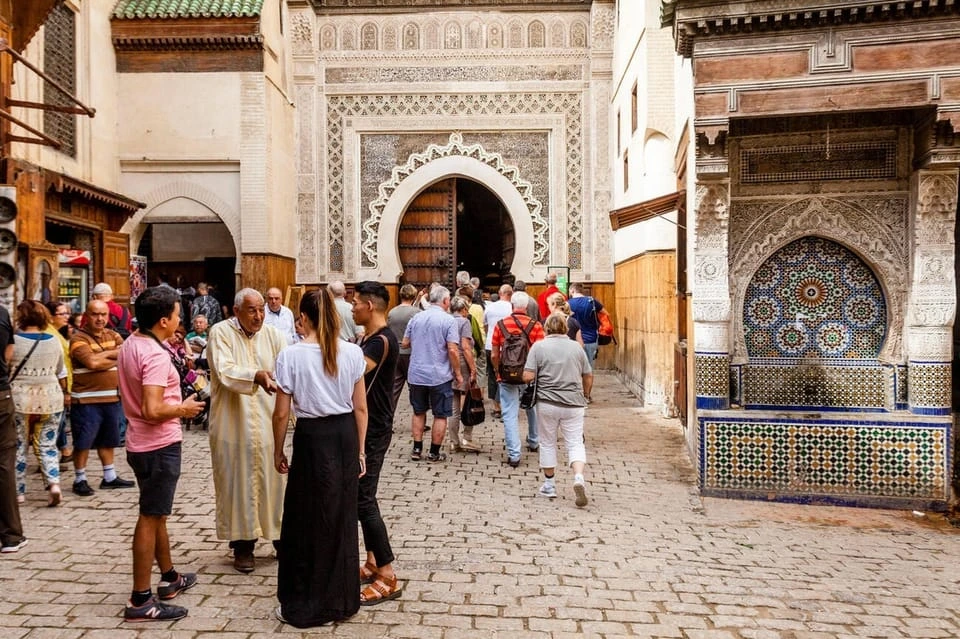Table of Contents
15 Amazing Facts About Morocco That Will Make You Want to Visit Now

Imagine stepping into a land where time seems to slow down, where every corner hides a story, and every scent takes you on a journey. Morocco is one of those magical places that deeply touches your soul. Maybe it’s the way the call to prayer echoes through the medinas at sunset, or the way the golden dunes of the Sahara stretch beyond what the eye can see. Whatever it is, Morocco leaves a mark.
In this article, you’ll discover 15 amazing facts about morocco that will spark your wanderlust and make you want to book a flight immediately. These are not just cool facts about Morocco—they are invitations to explore a land brimming with history, culture, and awe-inspiring beauty.
amazing facts about morocco: A Country of Rich Cultural Layers
Morocco is a cultural mosaic woven from the threads of Arab, Berber (Amazigh), African, and European traditions. This fusion creates a unique tapestry of customs, languages, and ways of life.
- Berber heritage: The Amazigh people are Morocco’s original inhabitants, and their traditions continue to influence daily life, especially in the Atlas Mountains.
- Arab influence: Brought through Islam in the 7th century, Arab culture shapes Morocco’s architecture, language, and religious practices.
- French and Spanish legacies: Colonial histories have left linguistic and architectural marks, especially in cities like Casablanca and Tangier.
Notable Moroccan Traditions:
- Mint tea ceremonies: Hospitality is sacred, and mint tea is the heart of social gatherings.
- Henna art: Used during celebrations, especially weddings.
- Public hammams: Traditional bathhouses are still a part of weekly life for many Moroccans.
Breathtaking Natural Diversity
One of the most surprising amazing facts about morocco is the sheer diversity of its landscapes. It’s not just a desert country—Morocco is home to mountains, coastlines, forests, and even snow.
The Mighty Atlas Mountains
- Stretch across central Morocco
- Ideal for hiking, skiing, and exploring remote Berber villages
The Sahara Desert
- Home to the golden dunes of Erg Chebbi and Erg Chigaga
- Camel trekking, sandboarding, and sleeping under the stars are unforgettable experiences
Coastal Gems
- Essaouira: A windy port city perfect for kitesurfing
- Agadir: Known for its beaches and resorts
- Taghazout: A surfer’s paradise
Moroccan Cuisine Will Surprise Your Taste Buds
Moroccan cuisine is a delightful blend of Mediterranean, Arabic, and African flavors. It’s one of the top reasons people fall in love with the country.
Must-Try Dishes
- Tagine: Slow-cooked stew made with meat, vegetables, and spices
- Couscous: Often served with vegetables and chickpeas on Fridays
- Harira: A traditional soup especially popular during Ramadan
- Zaalouk: A smoky eggplant salad served cold
| Dish | Key Ingredients | Best Time to Eat |
|---|---|---|
| Tagine | Meat, vegetables, spices | Lunch or dinner |
| Couscous | Semolina, chickpeas, vegetables | Friday afternoons |
| Harira | Lentils, tomatoes, lamb | During Ramadan (iftar) |
Don’t forget to enjoy a glass of mint tea, a staple of Moroccan hospitality.
The Architecture Feels Like Walking Through History
amazing facts about morocco

Morocco’s architecture is a living museum of Islamic and Andalusian design. Intricate tilework, ornate doors, and sprawling courtyards transport you to another era.
Highlights: amazing facts about morocco
- Hassan II Mosque (Casablanca): One of the largest mosques in the world, partially built over the Atlantic Ocean
- Ksar Ait Benhaddou: A UNESCO World Heritage Site featured in many Hollywood films
- Bahia Palace (Marrakech): A masterpiece of Moroccan craftsmanship
Surprising Facts That Tourists Love
Here are some unique and fun facts about Morocco that will surprise and delight you:
- Morocco has nine UNESCO World Heritage Sites, including the ancient city of Fes and the Medina of Tetouan.
- The University of Al Quaraouiyine in Fes is the oldest existing and continually operating educational institution in the world.
- Moroccan Arabic (Darija) differs significantly from Modern Standard Arabic.
- Chefchaouen, the Blue City, is painted almost entirely in shades of blue—a tradition believed to keep mosquitoes away and symbolize the sky.
- Morocco is a popular film location: “Gladiator,” “Game of Thrones,” and “The Mummy” were filmed here.
Traditional Clothing & Style
Morocco’s clothing reflects its climate, religion, and deep cultural heritage.
- Djellaba: A long, loose-fitting robe with a hood, worn by both men and women.
- Kaftan: Elegant and often richly decorated, typically worn by women for formal occasions.
- Babouches: Traditional leather slippers found in every market.
These garments are not just fashion statements—they reflect Morocco’s identity and values.
Moroccan Music and Festivals
Music in Morocco is a colorful blend of traditions, often linked to celebration, spirituality, and storytelling.
- Gnawa Music: A fusion of African, Berber, and Islamic rhythms, often performed during spiritual rituals.
- Chaabi and Rai: Popular styles found in cafes and city streets.
- Andalusian classical music: Originating from medieval Muslim Spain.
Major Festivals:
- Fes Festival of World Sacred Music: A spiritual gathering of global musicians.
- Mawazine Festival (Rabat): One of Africa’s largest music festivals.
- Rose Festival (Kelaat M’Gouna): Celebrating the harvest of roses in the Dades Valley.
City Life vs. Village Life
City Life:
- Fast-paced, modern, and diverse
- Cities like Casablanca and Rabat have international influence
- Marrakech and Fes blend old medinas with trendy cafes and art scenes
Village Life:
- Simpler and more traditional
- Strong community bonds and slower rhythm
- Rich oral storytelling and generational customs
Experiencing both gives a more complete picture of Moroccan society.
Travel Tips & Logistics for Visiting Morocco
To make your trip seamless, here’s everything you need to know:
Entry Requirements & Visas
- Tourists from the USA, EU, and many other countries can stay up to 90 days without a visa.
Best Time to Visit
- Spring (March–May) and Fall (September–November) offer the best weather
Getting Around
- Train: ONCF trains are affordable and comfortable
- Grand taxis: Shared long-distance taxis
- Domestic flights: Efficient for longer routes
Essential Travel Tips
- Dress modestly, especially in conservative areas
- Bargain in markets; it’s expected
- Stick to bottled water
| Travel Item | Recommendation |
|---|---|
| Currency | Moroccan Dirham (MAD) |
| Local SIM Card | Maroc Telecom or Orange |
| Plug Type | Type C and E (220V) |
| Language Spoken | Arabic, French, some English |
| Safety | Safe, but stay alert in busy areas |
FAQs About Amazing Facts About Morocco
Is Morocco safe for tourists?
Yes, Morocco is considered one of the safest countries in Africa. Exercise normal travel precautions.
What language is spoken in Morocco?
The main languages are Arabic and Amazigh, with French widely spoken. English is common in tourist areas.
What should I not do in Morocco as a tourist?
Avoid public displays of affection, always ask before taking photos of people, and dress modestly.
Is Morocco expensive to travel?
No, Morocco is very budget-friendly compared to Western countries. Meals and accommodations are affordable.
What is Morocco best known for?
Morocco is known for its diverse landscapes, flavorful cuisine, historic medinas, and rich cultural heritage.
Conclusion: Morocco is More Than a Destination—It’s a Journey Through Time
Now that you’ve uncovered these amazing facts about Morocco, it’s clear that this North African gem offers more than just photogenic moments. It’s a place where ancient traditions blend seamlessly with modern hospitality, where every meal tells a story, and where the landscapes are as diverse as its people.
Whether you’re a seasoned traveler or planning your first international adventure, Morocco promises a journey like no other. So why wait?
Book your trip, pack your bags, and let Morocco change the way you see the world.

